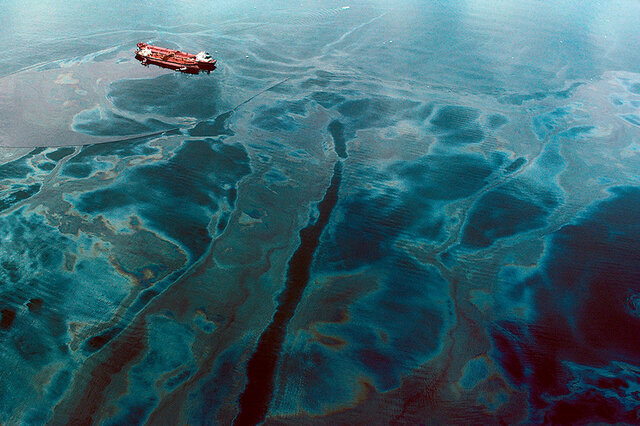From oil slicks to trawling: Persian Gulf under pressure

TEHRAN – The Persian Gulf has been affected by economic, political, and industrial goals over the past centuries and its ecosystem is at the knifepoint of many environmental threats, the most important of which are oil spills and trawling.
Iran has been known as one of the most strategic places in the world for thousands of years. Much of this strategic importance is due to the existence of one of the most important, richest, and most controversial water bodies in the world.
The "Persian Gulf", which is commemorated annually on April 30, 2005, has an undeniable environmental, economic, social, and political value not only in Iran but also in the world.
The day marks the anniversary of forcing out the Portuguese navy of the Strait of Hormuz in the Capture of Ormuz (1622).
The Persian Gulf ecosystem is polluted by the entry of urban and industrial waste. The development of unsustainable tourism activities also destroys its habitats and biodiversity. The Persian Gulf has an area of about 241,000 square kilometers. Its length is some 990 km, and its width varies from a maximum of about 340 km to a minimum of 55 km in the Strait of Hormuz.
It has its own environmental characteristics, as it is a semi-closed sea, aging 15,000 years, with an average depth of 35 meters, while being high salty with severe heat fluctuations, and an annual evaporation rate of 140 cm.
There are 2 species of dolphin and whale in the area, in addition to 1,100 species of fish and 5 species of turtle, the Persian Gulf is also hosting the second largest population of manatees, 232 seaweed species, and 4 million migratory birds annually, but today 240 important species and many habitats are under threat.
Until the discovery of oil in Iran in 1908, the Persian Gulf area was important mainly for fishing, pearling, sailcloth making, camel breeding, and date growing.
Since World War II the Persian Gulf and the surrounding countries have come to account for a significant proportion of the world’s oil production. In addition, the area has approximately two-thirds of the world’s estimated proven oil reserves and one-third of the world’s estimated proven natural gas reserves. The region thus has acquired considerable strategic significance for the world’s industrialized countries.
Challenges threatening the water body
Many habitats in the Persian Gulf have been destroyed due to fishing activities. Oil extraction in the Persian Gulf, its transportation, the pipes of the oil transfer route, etc., transmit pollutants to the sea and ultimately endanger the marine and coastal ecosystem.
Over 50 percent of the Persian Gulf pollution is related to oil extraction, which is one of the factors that has caused all five species of sea turtles in the country to become endangered.
Pollutants that threaten the life of marine mammals can be caused by petroleum products or chemicals that enter the sea through factory and sewage effluents. In addition, plastics and other wastes dumped in the sea suffocate marine organisms and, over time, break them down into small pieces, leaving toxic and oily substances and contaminating the food resources of marine mammals.
Algal blooms are another threat to marine mammals. Algal blooms occur when nitrate and phosphate in seawater increase for a variety of reasons, including the entry of sewage into the sea; it is a type of algae that is actually a type of "phytoplankton" that grows rapidly and covers the water surface and prevents sunlight from entering the sea, causes suffocation of aquatic animals, and ultimately affect the food of marine mammals.
On the other hand, the Persian Gulf ecosystem is polluted by the entry of urban and industrial waste. The development of unsustainable tourism activities also destroys habitats and biodiversity of the Persian Gulf.
Another factor that not only the Persian Gulf but the whole world is inevitably struggling with is climate change. The Persian Gulf is a semi-closed sea and this causes the water flow in the Persian Gulf to be low and the water temperature to rise. So, it has a negative impact on the habitats.
Prompt action to clean up any oil spills with the cooperation of the Ports and Maritime Organization is one of the effective measures to help the Persian Gulf survive, in addition to identifying the source of contaminants or fingerprinting of petroleum products.
FB/MG
